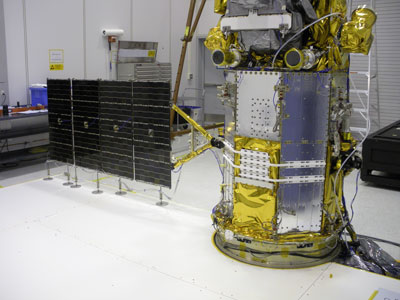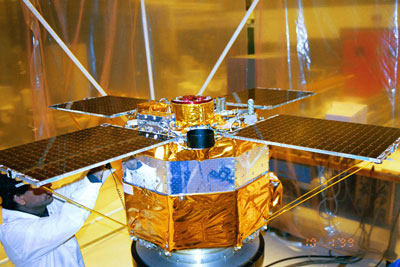Integration and testing of spacecraft is one of the most critical phases of any mission. Thorski Design has extensive experience in spacecraft integration and test.
Our areas of expertise include:
|
|
Below are some recent examples of our integration and testing services.

Solar Array Deployment Testing
Full scale deployment testing of spacecraft solar arrays presents unique challenges. For Glory, balloons or counterweights were not feasible due to the array geometry.
For the Glory solar array deployment testing, we designed:
- The deployment table, which was required to be level to within a few thousandths of an inch.
- The air bearing system supporting the solar array panels, which incorporated a spring suspension and spherical bearing to eliminate any applied moment
- The flight retention straps, equipped with two strain gauges each, to allow accurate measurement of the array preload
- The data acquisition system to install the arrays and monitor preload
Eric received a formal letter of commendation from NASA Goddard for his support of the Glory solar array design and test program.

Alignment and Mass Properties for a Spin-Stabilized Spacecraft
Instrument alignment, mass properties measurement, and balancing for a spin-stabilized spacecraft such as Acrimsat are a mission critical part of the test program. Eric was instrumental in the design and analysis of the Acrimsat spacecraft, and in the development of its test program.
Alignment of the instrument was required to be within 0.01 degrees of the spacecraft centerline. To accommodate this, he designed a unique mounting interface to the instrument, which allowed it to be easily aligned while monitoring its orientation.
Mass properties measurement and balancing are a similarly critical part of this process, and required balancing the spacecraft such that its spin axis was within 0.005 inches of its geometric centerline.
